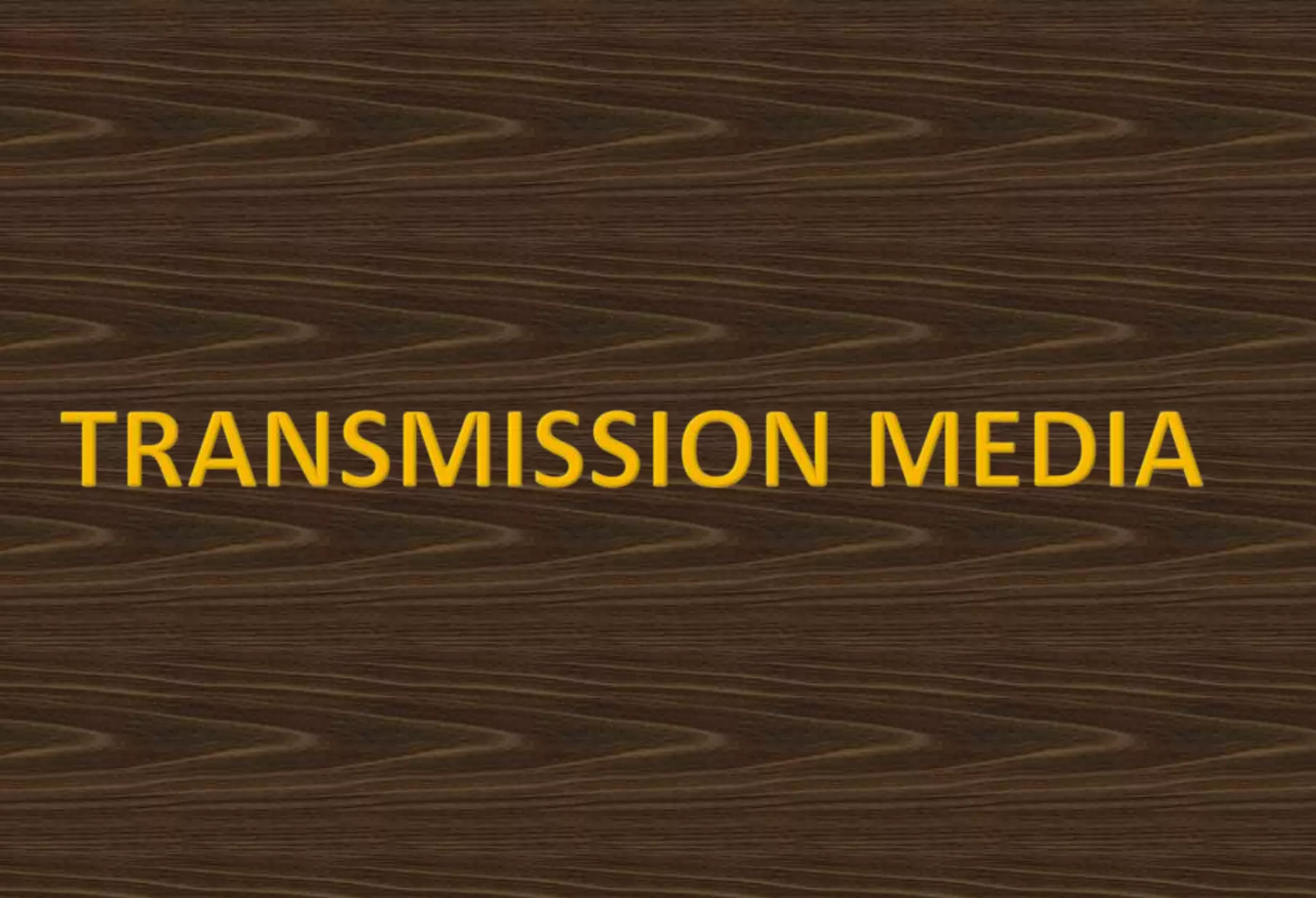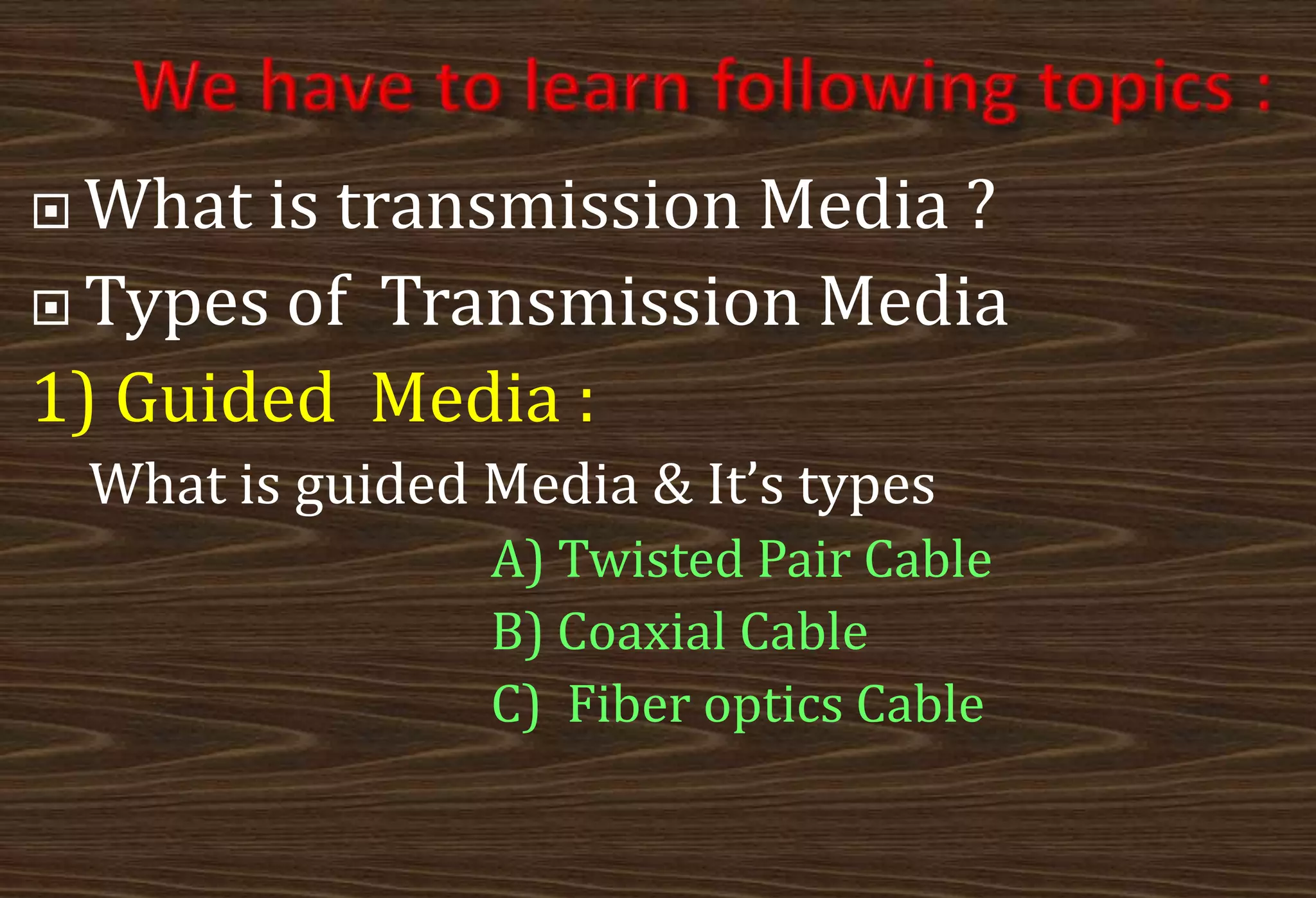The document discusses different types of transmission media, including guided (wired) media like twisted pair cable, coaxial cable, and fiber optic cable, as well as unguided (wireless) media like Bluetooth, Wi-Fi, satellite microwave, and infrared. It provides details on each type of media such as its components, uses, advantages, limitations, and data transmission capabilities.

















